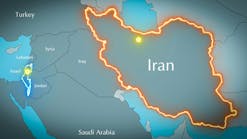L.F. Ivanhoe
Novum Corp.
Santa Barbara, Calif.
The U.S. oil and gas industry has a major problem in how to communicate with the general public about the importance of oil and gas to the economy.
Oil is the country's basic fuel, so ubiquitous that it is taken for granted like water.
Discussions of energy problems should accordingly begin with the global supply and price of crude rather than with the merits of solar or wind power.
Petroleum geologists have done such a good job of finding oil and gas that it looks as easy as growing crops, and engineers deliver the petroleum products like clockwork.
Novel alternate energy sources of only token significance to the national economy get equal or greater media coverage than the giant but unglamorous and routine petroleum operations until a spill or other accident occurs.
TELLING STATISTICS
The accompanying tables are based on the U.S. Department of Energy's annual energy review.
One summarizes national expenditures for the prime fuels and electricity in 1988. The other breaks down the energy input in British thermal units at electric utilities in 1983, 1988, and 1990.
People naturally vote their pocketbooks, but the financial choices on energy are rarely made clear to the predominantly nonoil electorate.
The illustration shows the various U.S. energy outlays from the public's perspective by the common denominator money instead of the engineers' Btu/heat conversion factor.
It is possible, by comparing money outlays, to visualize the effects of different costs of the various fuels. For instance, who would burn coal at all if it were not cheaper than oil or gas?
The total U.S. energy bill varies with the global price of crude. About half of U.S. energy outlays, give or take a few percentage points depending on the price of oil at a given time, is for oil used mostly for transportation.
There is still no viable alternative for oil in sight for the 200 million U.S. vehicles.
PAYING THE PRICE
The public has been conditioned to pay much higher fuel and electric bills than before the first oil price shock in 1973.
The total U.S. energy bill was only $82 billion in 1970. It topped $435 billion in 1985, then fell to $381 billion in 1986 due to lower oil prices and conservation.
Oil and gas dominated 1988 energy outlays, at 46% and 15%, respectively. Electricity's share was 31%.
Total U.S. outlays for electricity never decreased during 1970-88 in spite of major conservation in use.
The gross price utilities charged for electricity includes the cost of the fuels that are burned to generate steam to run turbines.
Some 92% of the coal equal to 7% of total U.S. outlays was burned to generate steam and electricity in 1988. This is itemized as coal in the tables and chart.
The cost of such fuels must be deducted from the gross electrical expenditures in order to obtain the net U.S. outlays for energy. Otherwise their cost would be included twice in the national totals.
ENERGY VS. ELECTRICITY
The distinction between energy and electricity is often confused.
Environmentalists commonly ignore the dominant national role of oil and wishfully concentrate discussions at energy forums to only alternative fuels and electricity generation.
Few people are aware that 90% of U.S. electricity is generated by turbines that turn on steam power derived by burning some fuel. Conversion efficiency of electricity generation is about 30%.
Electricity generated by hydroelectric, wind, geothermal, and other such energies involves no purchased fuel cost, but these nonfuel generation projects carry large investment expenses.
A separate insert graph shows the relative importance of the various sources of electricity in 1988. This is plotted at the same scale as the 1988 net fuel outlays for electricity in the main chart.
The insert is based on total Btu input rather than outlays for the various fuels.
FUEL CONTRIBUTIONS
Several points should be noted.
First, fuel oil now plays a minor role and is mostly standby for emergency needs.
Second, natural gas is about equal to hydroelectric power.
Coal is burned for more than half the nation's electric power generation due to its low cost.
Natural gas prices are set by competition with inexpensive coal for the electricity generation market, not competition with fuel oil.
Nuclear power produced 20% of 1988's electricity.
Less than 1% of 1988's electricity came from other sources such as solar, wind, wood, waste, and geothermal.
The total 1988 value of the entire group of other electrical fuels is estimated at about $4 billion vs. $188 billion for oil and $61 billion for gas.
The alternate fuels, while extremely important to their developers, environmentalists, and to the public media, are of negligible significance in the overall U.S. energy picture.
BIBLIOGRAPHY
U.S. Department of Energy, Energy Information DOE/EIA-0384(90).
Copyright 1990 Oil & Gas Journal. All Rights Reserved.

